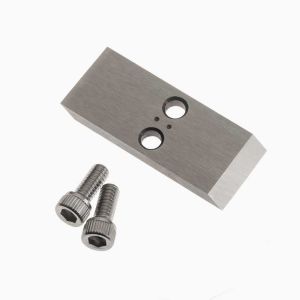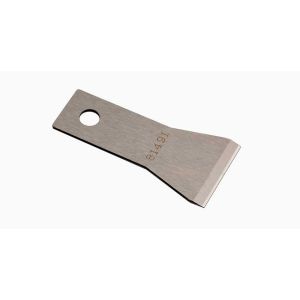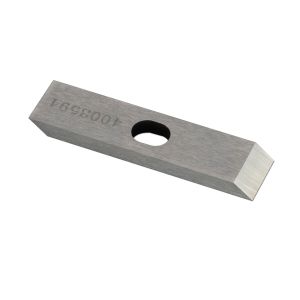Flexible and Single-Use Plastics Peak during the Pandemic

COVID-19's final impact on the world remains to be seen. The ripple effects are being felt at every turn, in every community both on a personal and professional level whether businesses have had to temporarily close during lockdowns or convert production operations to help overcome PPE shortages. While some outcomes such as higher unemployment rates, potential supply chain disruptions, and market volatility are foreseeable, the converting and packaging industries as well as the recycling and sustainability movements are seeing a ripple effect.
Disposable Plastics During the Pandemic
As the long-standing nemesis of the sustainability and zero waste movement, single-use and flexible packaging represent a unique business case as the world faces this unprecedented crisis. Beyond the benefits of convenience that toss away plastic utensils and water bottles bring come the health benefits of single-use plastics. From coffee shops that have banned multi-use cups to restaurants and food delivery services that bring orders in disposable plastic bags, the shift to more easily recyclable materials is being put on the back burner as businesses and consumers find ways to reduce the risk of transmitting the virus. The World Health Organization (WHO) is urging consumers to use disposable containers and packaging to decrease the risk of transmission and avoid the need to clean and sanitize. This includes everything from plastic cutlery and disposable cups to plastic dinnerware and bags.
Packaging goods are being dramatically impacted during the stay-at-home orders, according to Dana  Smith, packaging product manager at American Cutting Edge. Converting and packaging companies have had to remain very dynamic throughout the pandemic and will likely need to continue to do so. We encounter customers shifting their production across all product lines from their normal lines of business to PPE like face masks, disposable gowns, and other in-demand items. Smith indicates that one of the big pluses for American Cutting Edge is the ability to be flexible and dynamic and shift to help customers understand the best products available to help them effectively convert their operations and cut completely different materials with ease.
Smith, packaging product manager at American Cutting Edge. Converting and packaging companies have had to remain very dynamic throughout the pandemic and will likely need to continue to do so. We encounter customers shifting their production across all product lines from their normal lines of business to PPE like face masks, disposable gowns, and other in-demand items. Smith indicates that one of the big pluses for American Cutting Edge is the ability to be flexible and dynamic and shift to help customers understand the best products available to help them effectively convert their operations and cut completely different materials with ease.
It's critical that businesses work with a source for their blades that is more than just a supplier. At American Cutting Edge, we have a broad knowledge of industrial cutting with over 60 years of experience manufacturing industrial blades and knives. Our converting and packaging industry experts team up with internal customer resources to come up with the best solutions when quick changes have to happen whether it's a change to what's being manufactured or if new requirements come into play based on innovations to materials being cut continues Smith. "The impact doesn't stop with the conversion of businesses to support virus recovery efforts."
Surge in Demand for Flexible Packaging
When you look at global demand for flexible and single-use packaging, there has been a jump in the  purchase of groceries as a whole but specifically consumer packaged goods including food like microwavable dinners, macaroni and cheese, frozen food, and other kitchen staples. Smith continues, The increase in plastic consumption does not stop in the grocery store and restaurant take-out counters. The medical industry uses flexible and single-use plastic packaging to promote sterility for everything from surgical instruments and syringes to bandages and testing swabs. An increase in the use of this type of packaging during a time when there are extensive medical interventions on a global scale, it easy to understand how damaging this could be to environmental sustainability efforts.
purchase of groceries as a whole but specifically consumer packaged goods including food like microwavable dinners, macaroni and cheese, frozen food, and other kitchen staples. Smith continues, The increase in plastic consumption does not stop in the grocery store and restaurant take-out counters. The medical industry uses flexible and single-use plastic packaging to promote sterility for everything from surgical instruments and syringes to bandages and testing swabs. An increase in the use of this type of packaging during a time when there are extensive medical interventions on a global scale, it easy to understand how damaging this could be to environmental sustainability efforts.
According to a recent study by Research & Markets, the Global Flexible Green Packaging Market is forecast to reach $644.21 billion by 2027. With the call for single-use and flexible packaging increasing during the global pandemic and as consumers continue to embrace convenience, the move to flexible green packaging only makes sense.
The demand for flexible green packaging won't diminish any time soon, says Smith. There will be an even more critical push for more environmentally friendly options across all areas of the converting and packaging industries. We anticipate that national and state governments will implement recycling programs with higher requirements for flexible packaging. As the push for a more sustainable planet grows, pressure for products that are environmentally friendly and green will become more important.
The Flexible Packaging Association (FPA) presents evidence that flexible green packaging provides environmental benefits at every phase of the package life cycle compared to other forms of packaging including:
- Material resource efficiency
- Source reduction
- Extension of food shelf life
- High product to package ration
- Lighter weight for transportation
- Fewer materials to the landfill
Recent food packaging innovations solve many of the industry's challenges including extending product
In the past, when food packaging was recycled it could not be used for the same purpose due to contamination concerns. However, with recent developments in packaging and recycling technology, there are now some forms of post-consumer packaging (PCR) that can be recycled and a portion that can be used for its original purpose. PCR is less wasteful new plastic because it doesn't take as much energy and needs fewer non-renewable resources to manufacture.
Aside from PCR, which is not always an appropriate choice for an application, there are other ways to make packaging greener including but not limited to:
- Reducing the amount of packaging required for a product, commonly known as source reduction.
- Making packaging from compostable plant materials
- Using biodegradable materials that allow waste to break down after time in a landfill
- Using degradable materials which are oil-based and break down through chemical reactions
- Truly sustainable packaging that can continue indefinitely without environmental damage




